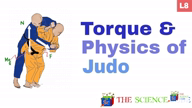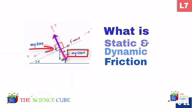Newton's laws of motion are 3 physical laws that, together, lay the foundation for classical mechanics. They describe the relationship between a body and the forces acting upon it, and its motion. These laws have been expressed in several ways, over nearly three centuries and can be summarized as follows
First law: An object either remains at rest or continues to move at a constant velocity, unless acted upon by a force.
Second law: The vector sum of the forces F on an object is equal to the mass m of that object multiplied by the acceleration a of the object: F = ma.
Third law: When one body exerts a force on a second body, the second body simultaneously exerts a force equal in magnitude and opposite in direction on the first body.
In this course, you get a deep dive of all these concepts and how to use them in solving numerical problems with ease.
The concepts covered are -














